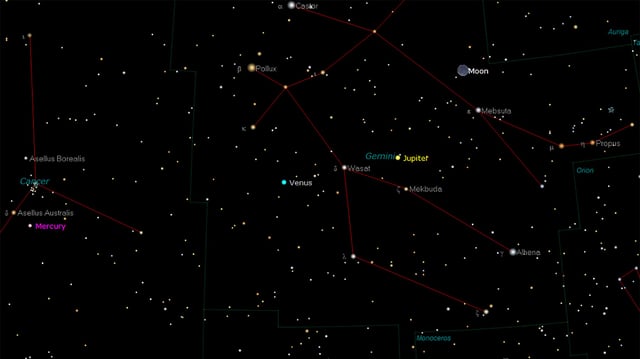Overview
- The planetary parade remains visible in the pre-dawn sky through Thursday with the best viewing window about 45–60 minutes before sunrise.
- Mercury reaches its greatest western elongation on Aug. 19, making it especially bright and easier to spot near the horizon.
- A 9%–16% waning crescent Moon passes close to Venus on Aug. 20, with Earthshine rendering the Moon’s dark side faintly visible.
- Venus, Jupiter and Saturn appear as naked-eye points of light while Uranus and Neptune require binoculars or a small telescope.
- After Friday, Mercury will drop back toward the Sun and this is the last six-planet display of the year until a similar event in February 2026.

